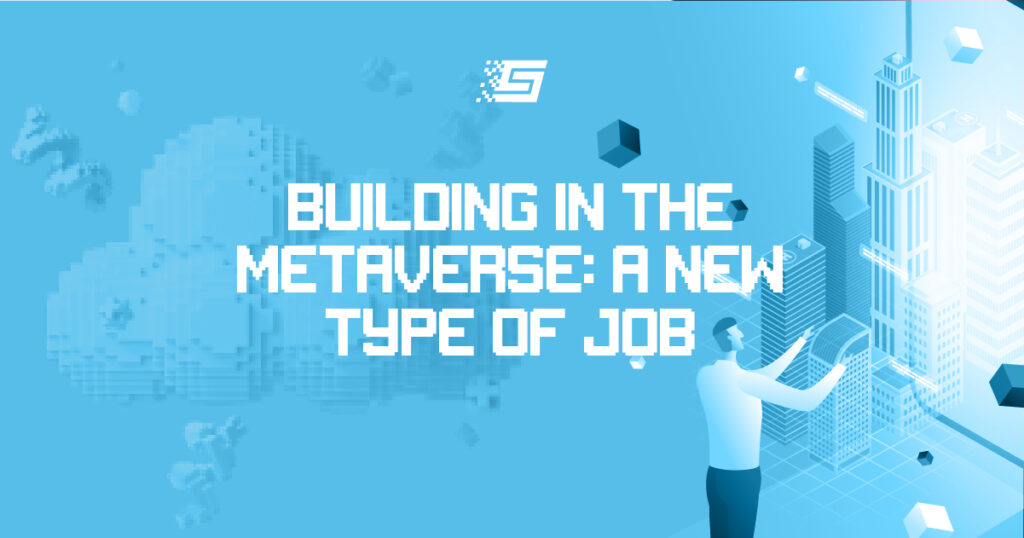Aviation And The Metaverse
The aviation industry has always been full of pioneers, so it comes as no surprise that it has quickly embraced new technology. The endless possibilities presented by the metaverse are being explored at pace. With the advent of electric vertical take-off and landing (eVTOL) aircraft and unmanned aerial equipment like drones, the arrival of the next generation of urban air mobility vehicles is already upon us.
The aviation industry was one of the most severely impacted during the COVID-19 pandemic, and it remains under pressure from various other factors: the price of fuel, rising interest rates, staff shortages, and the increasing replacement of business travel with virtual meetings. Airlines and airports are now turning to the metaverse to augment their offerings.
The Airport Experience
Immersive shopping:
London’s Heathrow Airport partnered with luxury brands like Chanel and their “beauty spaceship” to enable shopping passengers to try on products virtually.
Virtual queuing:
Trialed at LAX airport.
Virtual replicas:
Qatar Airways recently launched QVerse, which is a virtual reality program allowing passengers to look inside an aircraft from the comfort of their homes.
Testing:
Some manufacturers are pushing boundaries via the metaverse. Airbus and Boeing are exploring ways of streamlining production by creating virtual replicas of aircraft and using them to run tests and simulations. This means they could gather data and results without needing to accumulate flight hours on physical trial aircraft, mitigating safety risks to the test crew and saving costs.
Digital enhancements:
Airbus and HeroX held a crowdsourcing competition called “Metaverse and the Future of Flight,” looking at innovative ways of using the metaverse to redesign and elevate the traveler experience.
I Can See For Miles
The metaverse can also make it easier to earn and redeem air miles. Frequent flyer programs that provide benefits with an airline create huge real-world value for both travelers and airlines, along with generating customer loyalty.
The first airline that accepted cryptocurrencies in payment for tickets was airBaltic. They also became the first airline to issue non-fungible tokens (NFTs) when launching Planies, an NFT collection that it will link to its loyalty program. Emirates will also be launching experiences in the metaverse alongside collectible and utility-based NFTs.
As air mile programs are also closely connected with ticket sales, this new technology offers novel distribution opportunities. For example, Air Europa has established a partnership with blockchain distribution company TravelX (who built the very first blockchain-based distribution protocol for the travel industry) to produce the world’s first NFT flight ticket series, NFTickets, entitling owners to access a flight to an event in Miami Beach. Air Europa’s first NFT recently sold for $1 million at auction.
Into The Future
Advanced air mobility is the next inflection point in aviation’s evolution. It is a frontier that is being explored by a combination of giants of aerospace, global logistics companies, and entrepreneurs. These include the likes of Airbus and Boeing (Aurora), Amazon Prime, and DHL.
eVTOL aircraft represent an evolution in the aviation industry’s focus as the need to design modes of transportation with substantially lower emissions, and noise pollution is becoming ever more urgent. eVTOLs can be used for passenger service, freight, disaster relief, defense, and final mile logistics.
These aircraft are being developed by a variety of companies working in the space, but many of the models will have to begin with commercial passenger operations with a pilot on board. It is expected that the piloted models will achieve certification in various jurisdictions a few years ahead of autonomous aircraft, reflective of the need to develop the technology along the regulatory framework and the passenger buy-in needed to make this possible. But the achievement of autonomous flight without a pilot is critical to the ultimate economic viability of eVTOL flight. Consider a four-seat model of eVTOL aircraft with a pilot present – the capacity of the aircraft to generate a return is reduced by 25 percent.
What if there is an interim stage between piloted and autonomous flight, where aircraft could be piloted remotely? Suppose the metaverse can be used to build a digital twin of any physical space. In that case, the conditions in an eVTOL operating location could also be replicated so that pilots in any location could operate them safely. It would be possible to overlay a Google Earth-style functionality on top of a virtual replica of the landscape with marking safe glide paths for the event of a malfunction and an “obstacle-free volume” area to be stipulated for every vertiport, which could be supplemented in real time by cameras and other sensors to deal with things such as cranes moving on construction sites and also input from passengers.
Taking the pilot out of the picture offers immediate uplift in return, enabling a vehicle to carry an additional paying passenger or more cargo. It will enable the industry to regain economic sustainability sooner, even before total autonomy of flight is achieved. Building a support infrastructure in the metaverse could help address the global pilot shortage as well if the next generation of eVTOL pilots could all be trained remotely, certified centrally, and deployed globally.
The Legal Issues
With such complex and novel technology, the legal and regulatory obstacles to be considered and addressed by the fledgling eVTOL industry are many. It is critical for industry stakeholders to engage with the following topics:
Certification: eVTOLs are difficult to define because of the sheer amount of designs currently being proposed, making the task of creating certification standards challenging. Close collaboration with regulators and also aviation authorities is obviously, therefore, essential.
Insurances: Industry thinking on any applicable liability issues and the laws that regulate accidents and incidents remain in progress. Recent lessons learned from developments in the unmanned aerial vehicle/drone market have demonstrated that traditional policy wordings are not quite fit for purpose when it comes to insuring new technology such as eVTOLs. This is especially true if the operational infrastructure is built in the metaverse, and new insurance policy wordings accommodating the technology will need to be developed.
Liability and risk allocation:
Manufacturers and operators will have to consider how to apportion liability among themselves, as well as risks that can be passed on to the end users via their contractual ticketing arrangements. A careful balance would need to be struck as overly robust indemnity and liability wording might undermine confidence in the industry and would likely be met with resistance from regulators and legislators (if not already fettered by consumer protection legislation).
Cybersecurity and physical safety:
Security and safety issues could arise because of closer operating proximity to potentially malicious actors and also to public infrastructure. If vehicles could be operated using the metaverse, they might be interfered with in a similar way. Additionally, both passenger data and flight ops/aircraft-specific data in the metaverse would be extremely valuable, both to bad actors and to marketers.
Aviation is well poised to maximize the potential of the metaverse, especially in conjunction with emergent technologies like eVTOL aircraft. As these fields develop, the legal and regulatory frameworks facilitating this potential will have to evolve quickly to ensure that aviation can benefit from the wealth of new possibilities.


